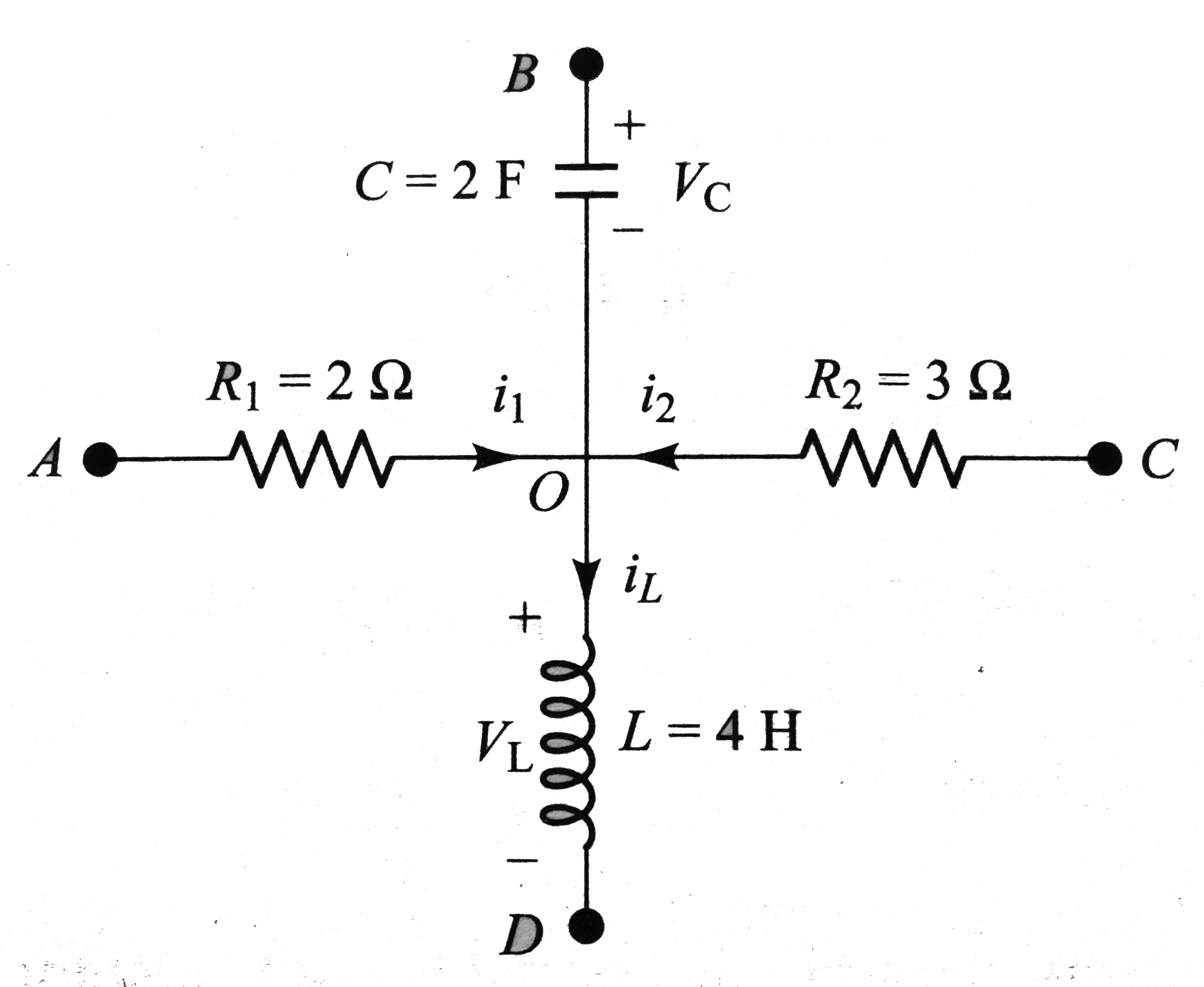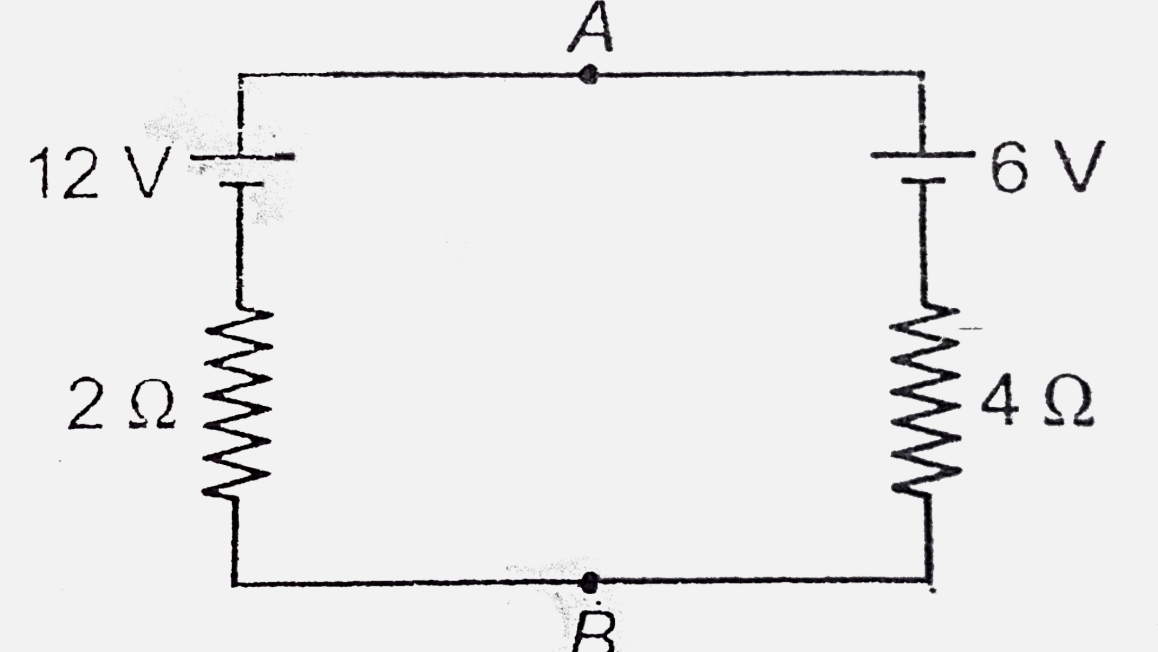In Fig i1=10e−2tA, i2=4A, and VC=3e−2tV.
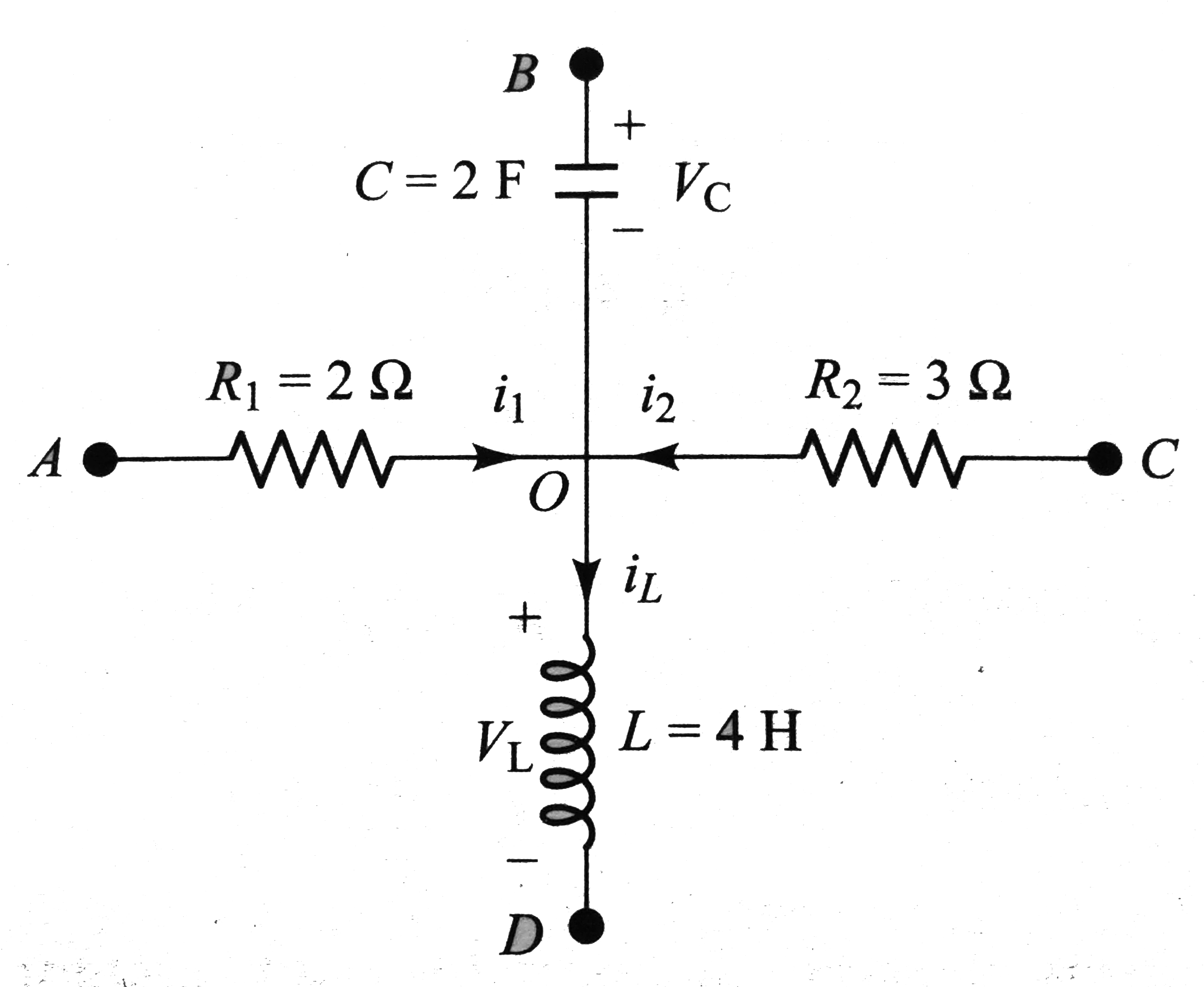
The variation of potential difference across C and D(VCD) with time can be expressed as


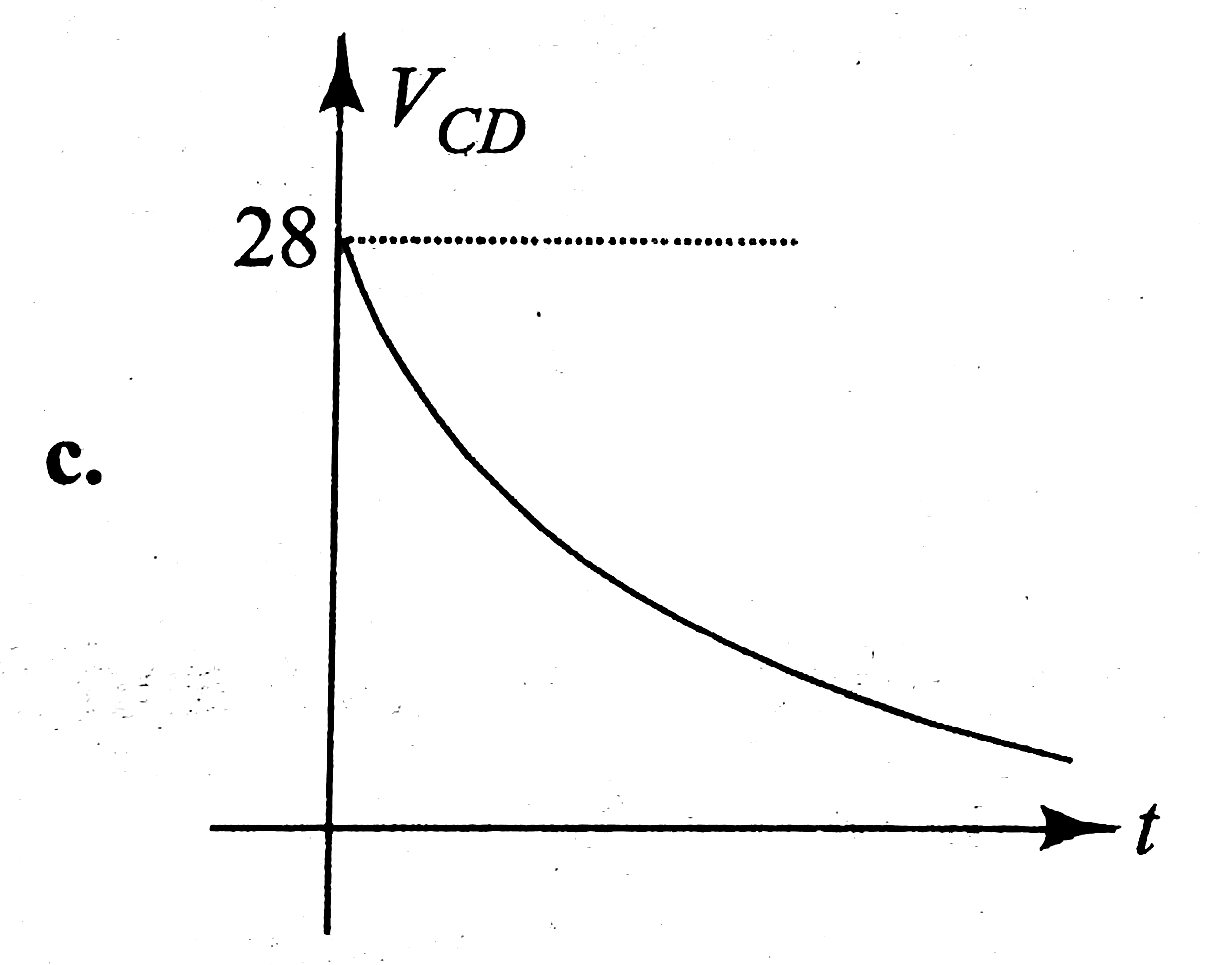

The correct Answer is:B
Instanctaneous current in the capacitor,
q=CVC=(2)(3e−2t)=6e−2tA
Current, iC=dqdt=−12e−2tA
This current flows from B to O.
From KVL, we have
iL=i1+i2+iC=10e−2t+4−12e−2t
=(4−2t−2t)A=[2+2(1−e−2t)]A
iLvs. time graph is as shows in Fig lt
iL increases from 2A to 4A expontially.
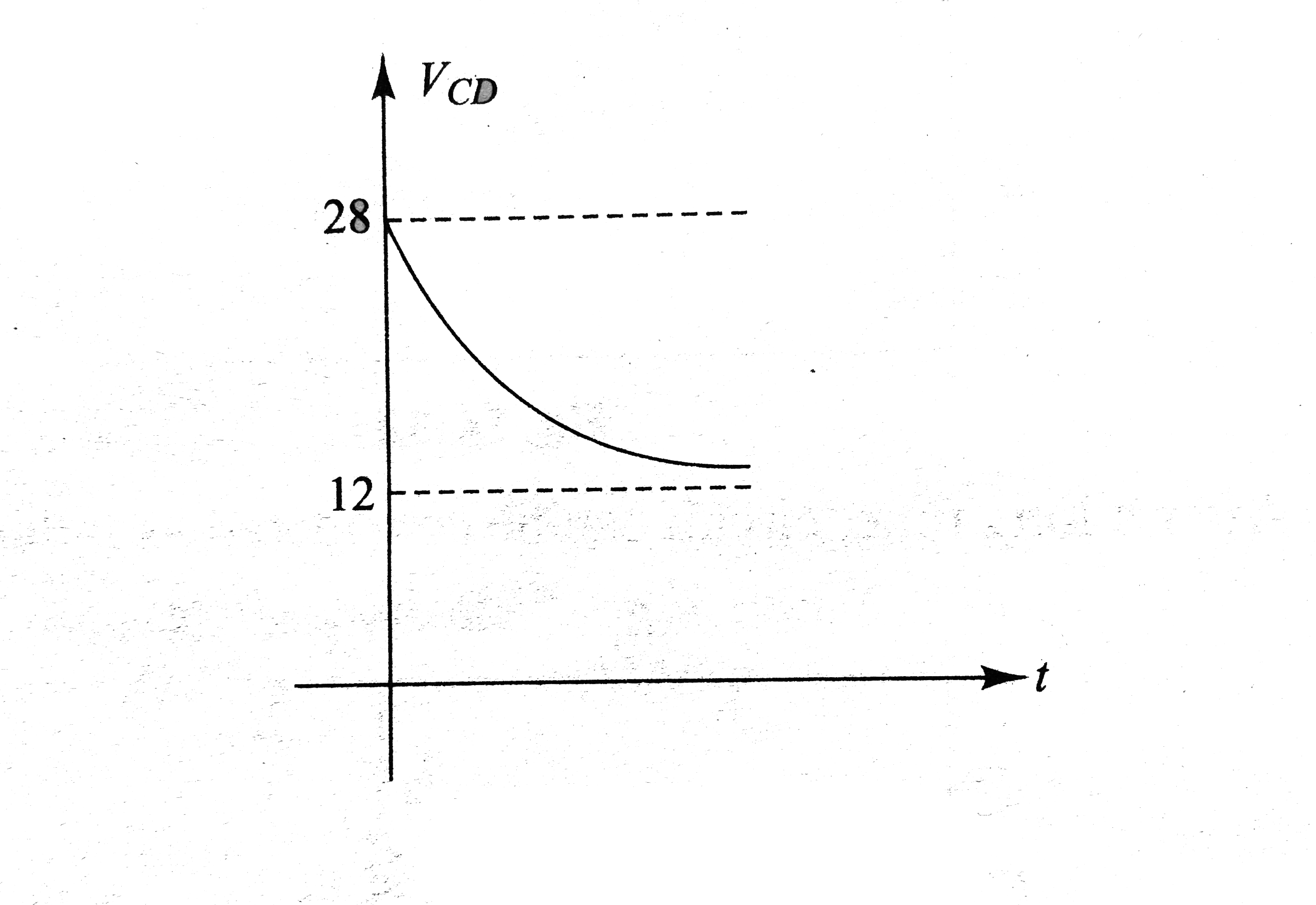
VL=LdiLdt
=(4)ddt(4−2e−2t)=16e−2tV
VL decreases exponentially from 16A to 0 as shows in Fig.
To determine VAC, we begin from A and at C. From KVL,
we have

VA−i1R1+i2R2=VC
VA−VC=i1R1−i2R2
Substituting the values, we have
VAC=(10e−2t)(2)−(4)(3)
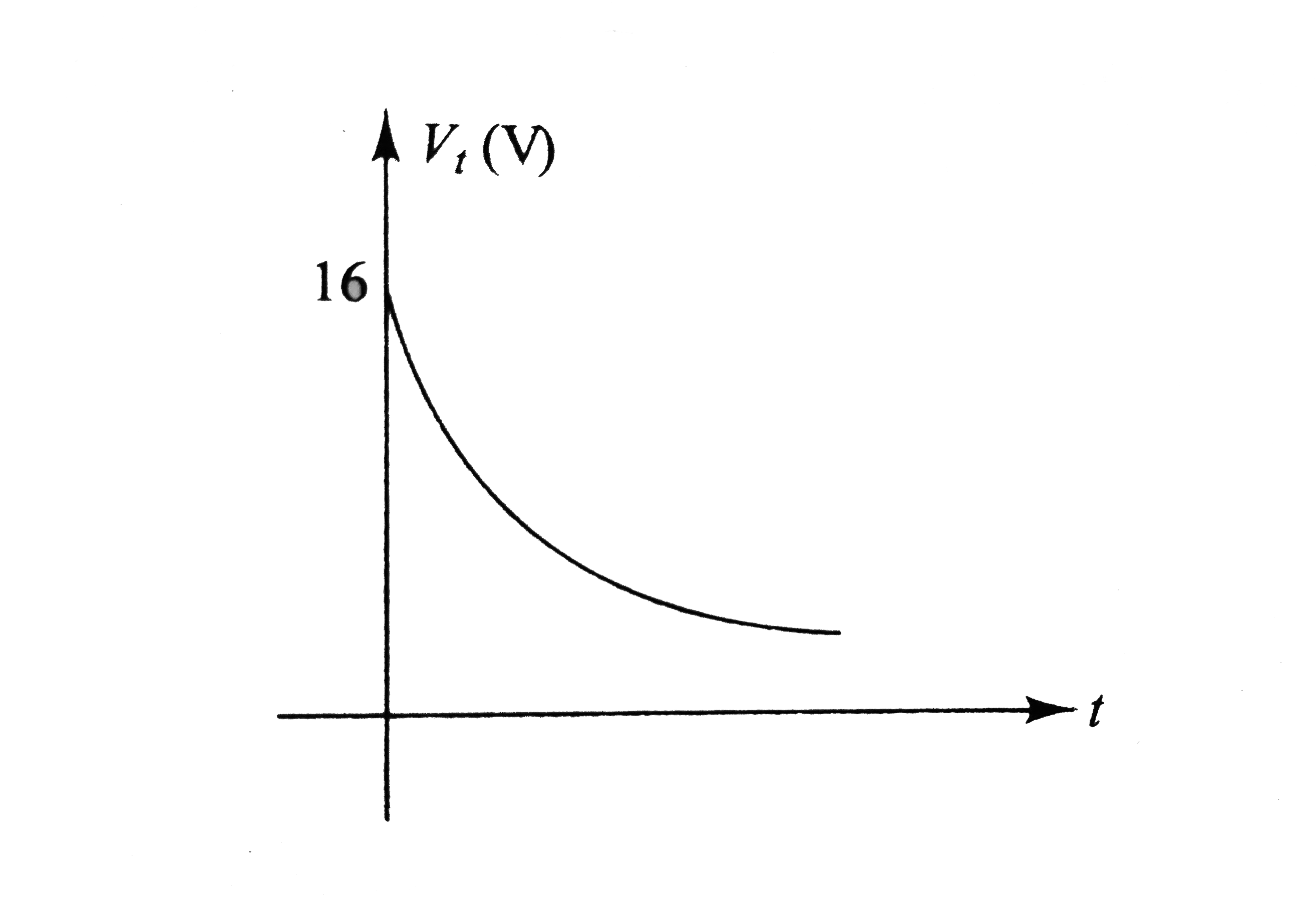
VAC=(20e−2t−12)V
At t=0, VAC=8V
At t=∞, VAC=−12V
Therefore, VAC decrease exponentially from 8V to 12V.
Similarly, we have from A to B
VA−i1R1+VC=VB
VAB=VA−VB=i1R1−VC 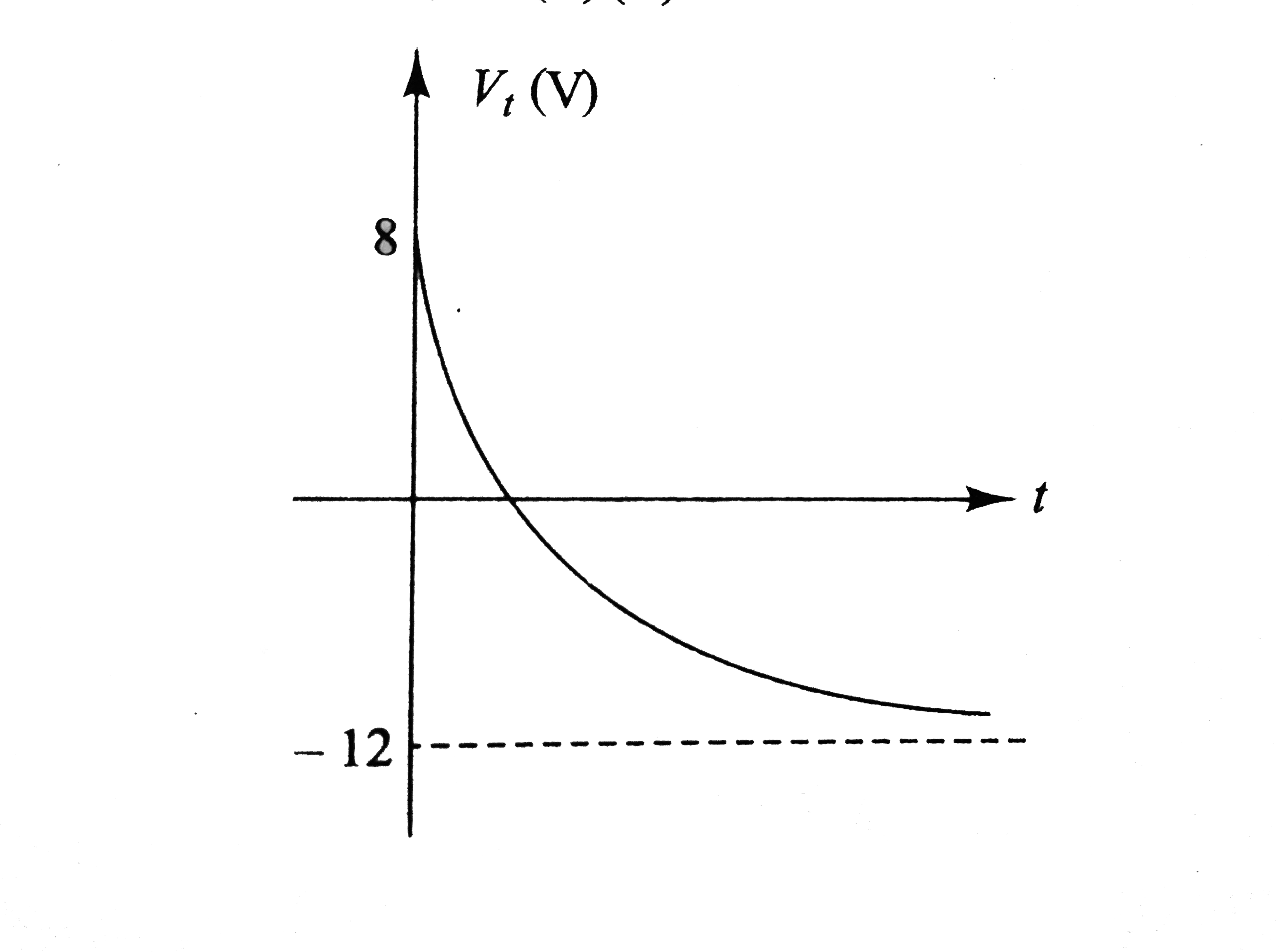
Substituting the values, we have
VAB=(10e−2t)(2)−3e−2t
VAB=17e−2tV
Thus, VAB decreases exponentially from 17V to 0.
As we move from C to D,
VC−i2R2−VL=VD
VCD=VC−VD=i2R2+VL
Substituting the values we have,
VCD=(4)(3)+16e−2t
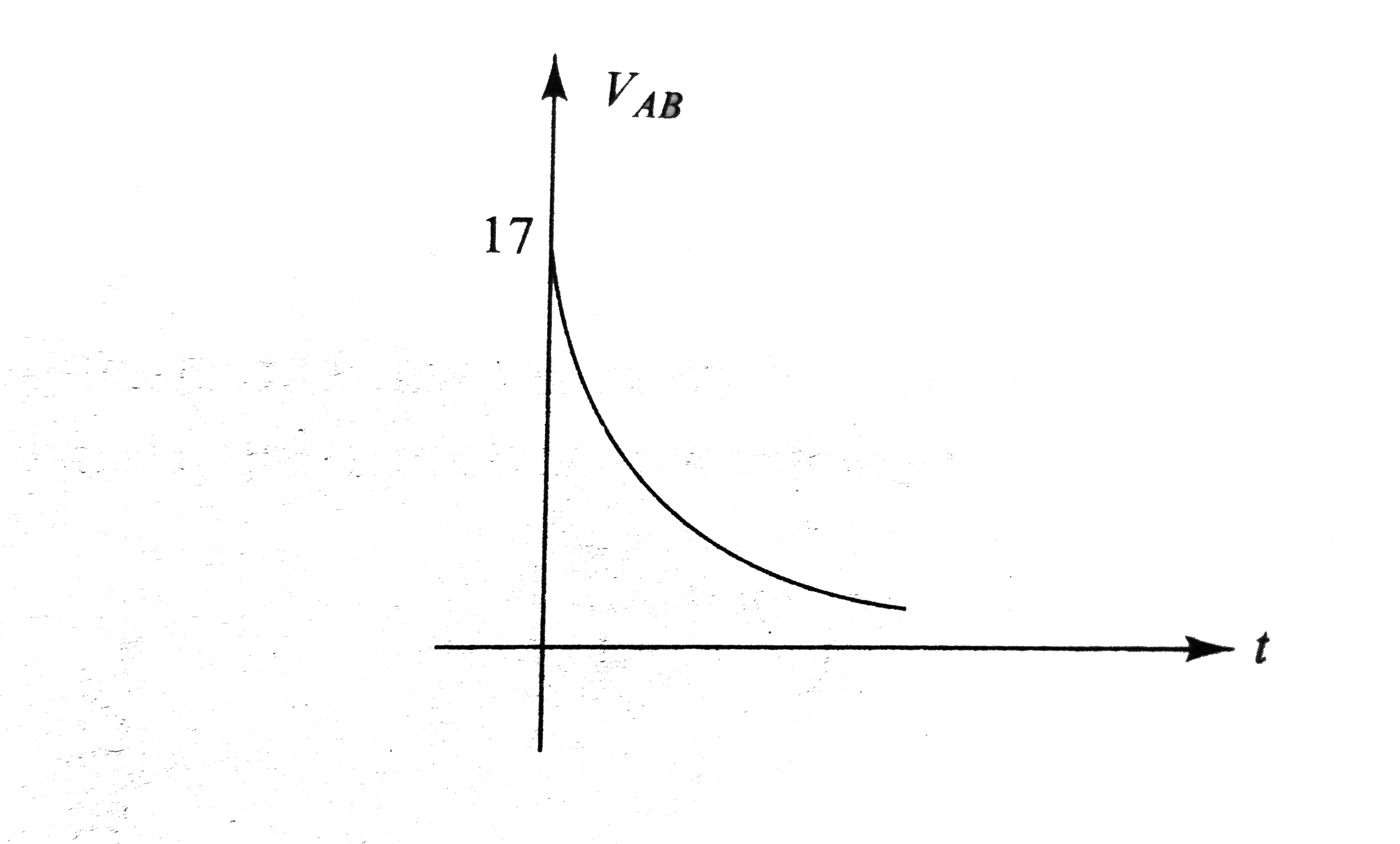
VAD=(12+16e−2t)V
At t=0,VCD=28V
and at t=∞,VCD=12V
i.e., VCD decreases exponentially from 28V to 12V.
Topper's Solved these Questions
- INDUCTANCEBook:CENGAGE PHYSICS ENGLISHChapter:INDUCTANCEExercise:Exercises (integer)
Explore 8 Videos
- INDUCTANCEBook:CENGAGE PHYSICS ENGLISHChapter:INDUCTANCEExercise:Archives (fills In The Blanks)
Explore 3 Videos
- INDUCTANCEBook:CENGAGE PHYSICS ENGLISHChapter:INDUCTANCEExercise:Exercises (assertion-reasoning)
Explore 2 Videos
- HEATING EFFECT OF CURRENTBook:CENGAGE PHYSICS ENGLISHChapter:HEATING EFFECT OF CURRENTExercise:Thermal Power in Resistance Connected in Circuit
Explore 27 Videos
- MAGNETIC FIELD AND MAGNETIC FORCESBook:CENGAGE PHYSICS ENGLISHChapter:MAGNETIC FIELD AND MAGNETIC FORCESExercise:Multiple Correct Answer type
Explore 2 Videos
Similar Questions
Knowledge Check
In the figure shown i=10e−4tA. Find VL and Vab
 A−40eVB40eVC40eVD−40eV
A−40eVB40eVC40eVD−40eV
In the Figure shown i1=10e−2tA,i2=4A and VC=3e−2tV. Determine
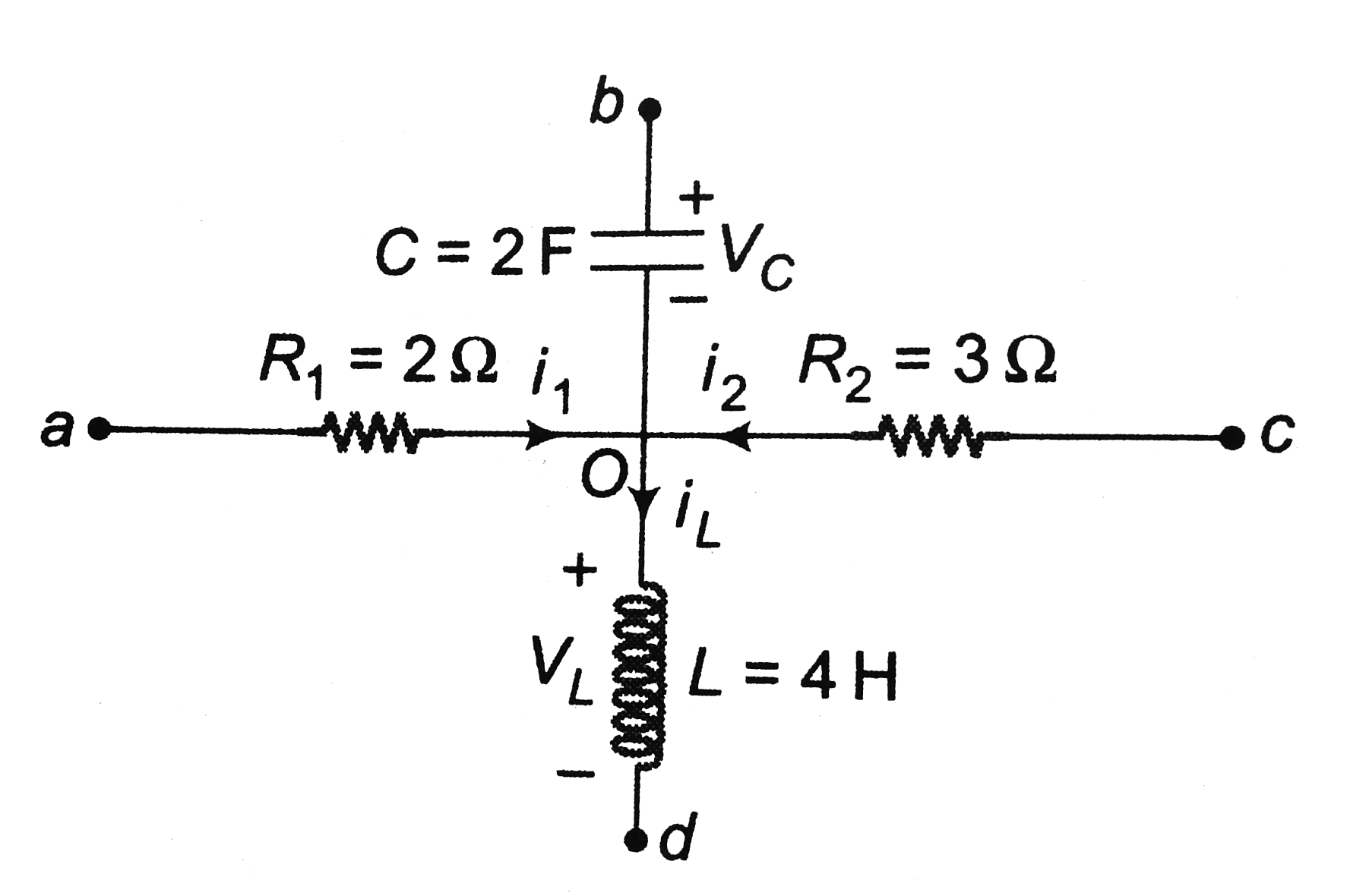
a. iL and VL b. Vac,Vab,Vcd
View SolutionIn the figure shown i=10e−4tA. Find VL and Vab

View SolutionIn the figure shown i=10e−4tA. Find VL and Vab

View SolutionPotential difference between points A and B (i.e. VA−VB) is -----
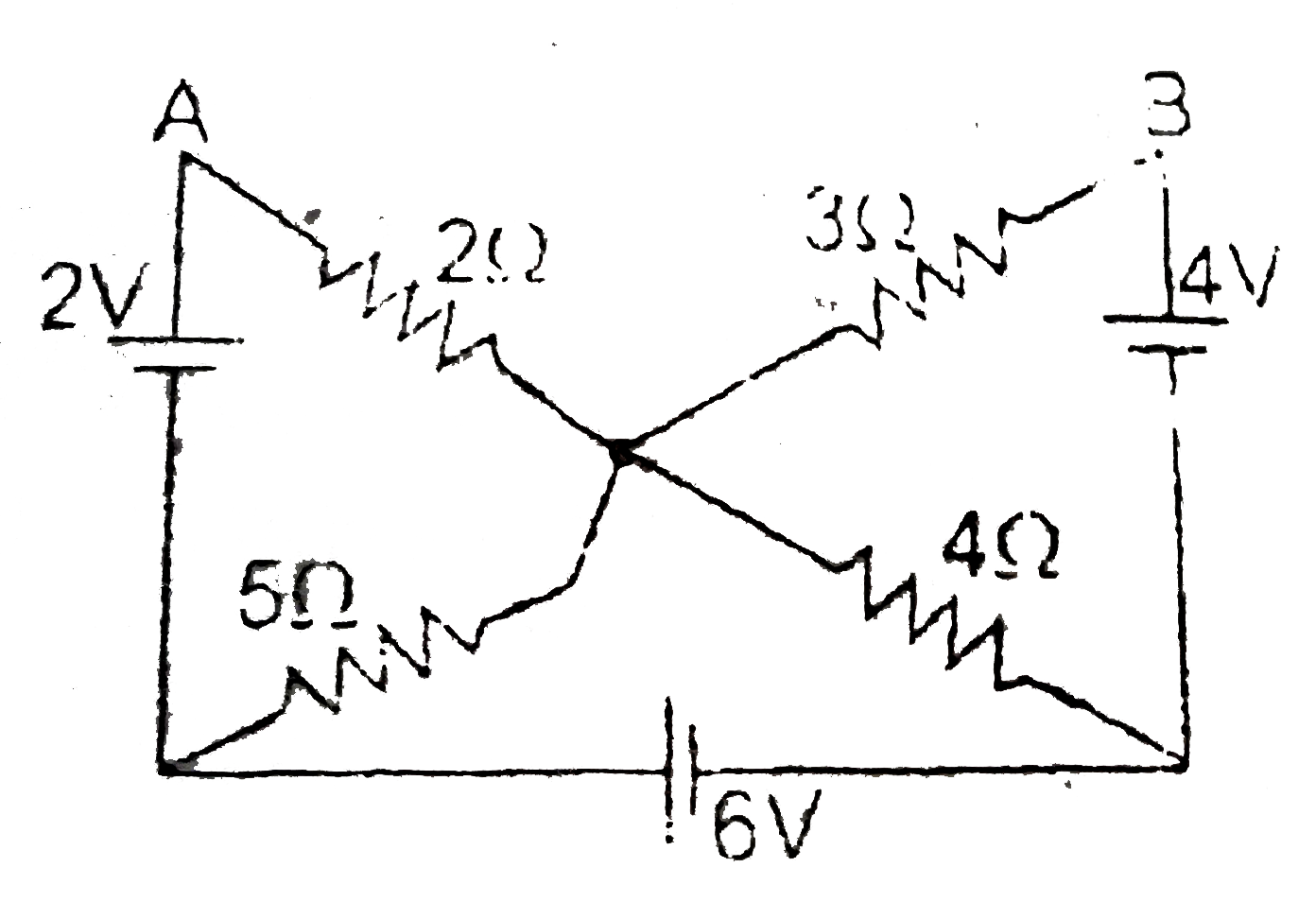
View Solutionin a series LCR circuit, what is the phase difference between VLandVC where VL is the potential difference across the inductor and VC is the potential difference across the capacitor?
View SolutionIn the circuit shown, the potential differences, V1 ( between A and B ) and V2 ( between C and D ), are
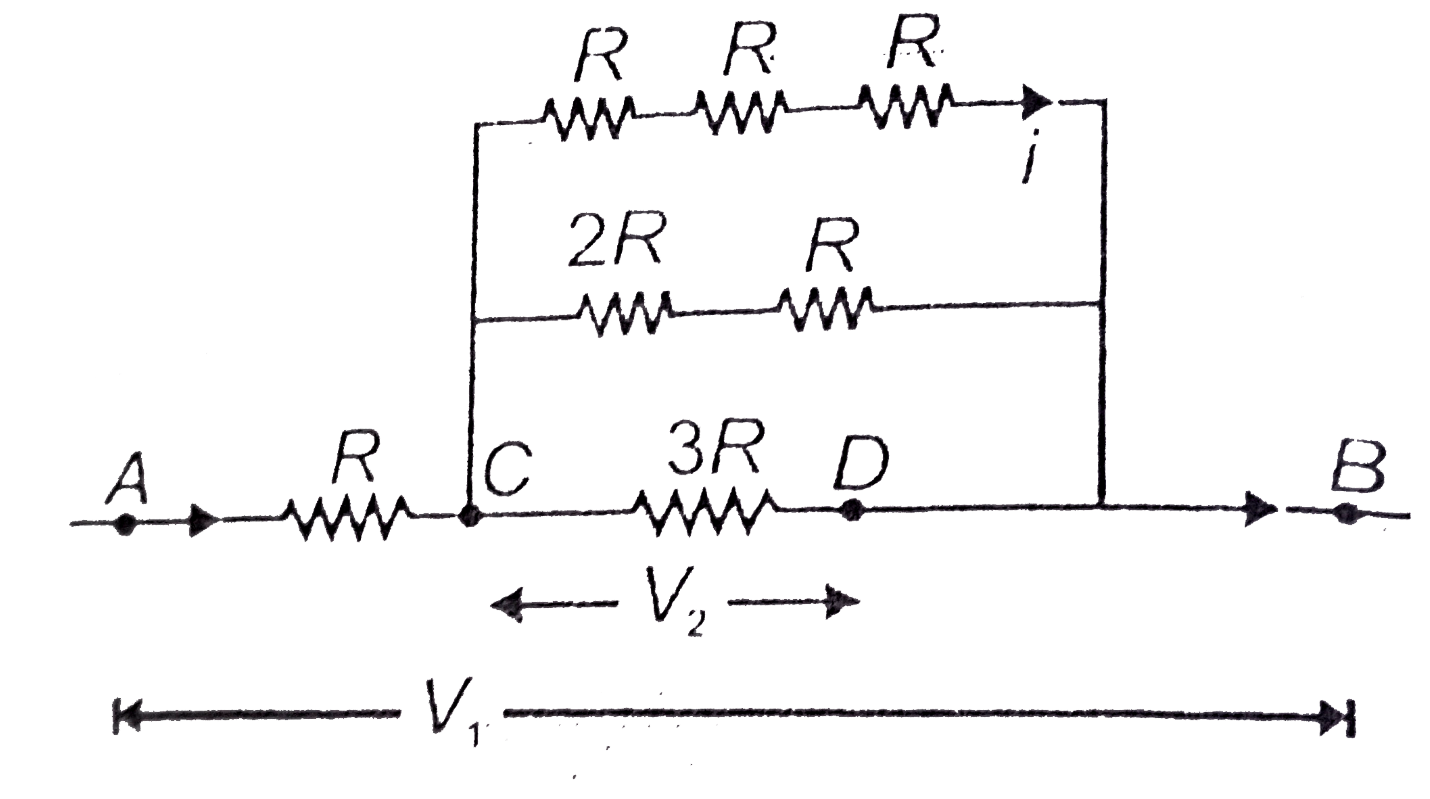
View SolutionIn the circuit shows in Fig. , E=10V, R1=5Ω, R2=10Ω, and L=5H. For the two separate conditions, (i) switch S is just closed and (ii) switch S is closed for a long time, calculate
a. current i1 through R1,
b. current i2 through R2,
c. current i through the switchs,
d. the potential difference across R2,
e. the potential difference across L,
f. di2/dt.

View Solution


